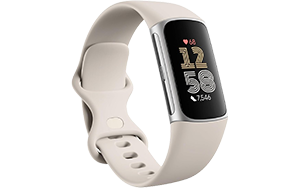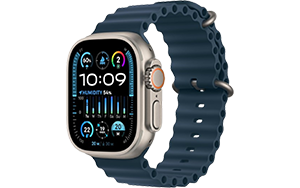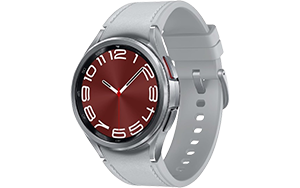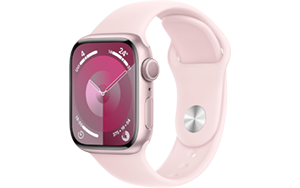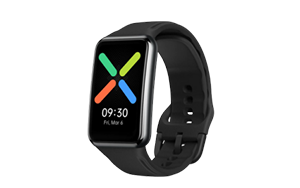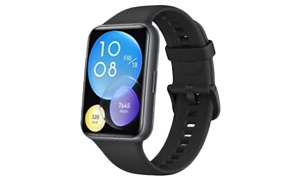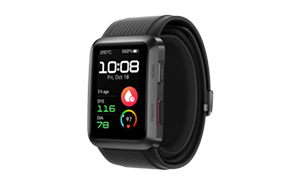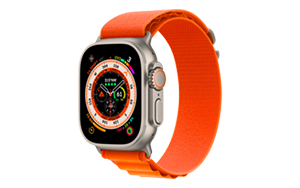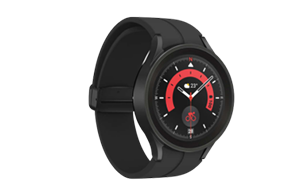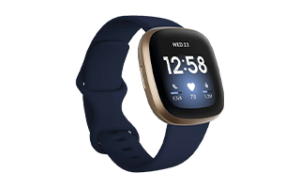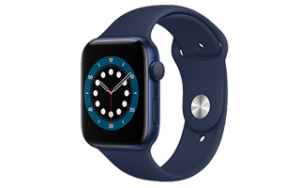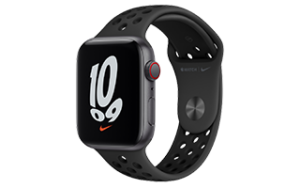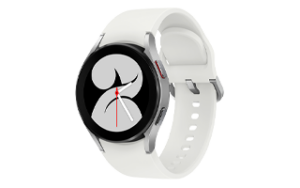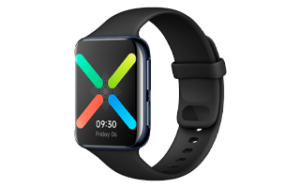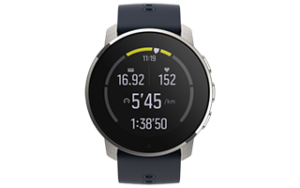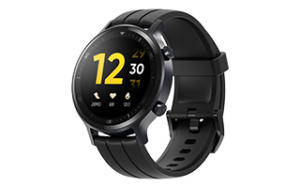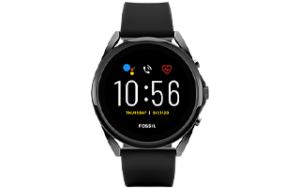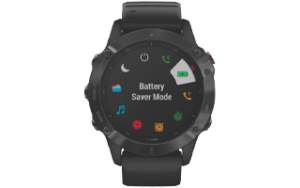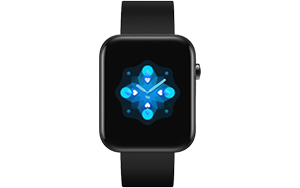Competition breeds ambition.
Samsung Galaxy Watch Ultra review: A more muscular smartwatch
Back in 2022, there was some initial uncertainty around whether the Apple Watch Ultra was a step too far. The original Apple Watch was never cheap and its high-end counterpart raised the bar when it came to price just as much as it did performance. However, time has proven Apple's bet on a bolder and more rugged version of its iconic smartwatch as a smart one. The Apple Watch Ultra has been reviewed well, sold well and will likely get an update in September this year.
Before that happens, Samsung is looking to tell its version of the story with the new Galaxy Watch Ultra. As with its Apple-branded counterpart, what's here is not going to be for everyone. However, if past Galaxy Watches have left you wanting, this may well be the overkill upgrade you've been waiting to justify to yourself.
How much does the Galaxy Watch Ultra cost in Australia?

In Australia, the Samsung Galaxy Watch Ultra retails for $1299. That's a steep sum that puts it $100 below Apple's own Apple Watch Ultra and well above this year's Galaxy Watch 7.
Naturally, it's also the most expensive wearable that Samsung has ever brought to the market. Of course, that's not to say there aren't opportunities to save. Samsung's best tech rarely holds its price for long and there's always a good deal to be had if you know where to look.
Check out the table below for a snapshot of how Australian retailers are pricing the Galaxy Watch Ultra.
Samsung Galaxy Watch Ultra: Design and features

Samsung has been playing in the smartwatch space longer than almost any other brand has and while its commitment to offering wearable tech that more-or-less matches the competition when it comes to features hasn't wavered, the last few years haven't exactly inspired confidence.
If you're sticking to tit-for-tat, there's not a lot of room for surprises or innovation. When your competition more-or-less defines what this specific consumer tech category is in the minds of mainstream consumers, steady gains start to feel like stagnancy.
In that sense, the Galaxy Watch Ultra is exactly what Samsung has needed. Where previous smartwatches have been held back by the reality that they need to remain close enough in price to their Apple counterparts to compete with them, this one feels like an excuse for Samsung's design and technical talents to flex and do things that it otherwise couldn't get away with doing.
One person's radical is another person's ridiculous and there's no better example of that than the Galaxy Watch Ultra's "fusion" design. This fururistic form-factor combines a 1.5-inch circular AMOLED display with a squared-off chassis that sits flat against your wrist.
In terms of inputs, there are two buttons on the right-most edge of the frame with a third dial-shaped key that sits between them. That last one might resemble the Digital Crown on the Apple Watch but spinning it doesn't do anything. Functionally, it's just a third differently sized button.
The Galaxy Watch Ultra is made of Grade 4 titanium and built to last with MIL-STD 810H, 10ATM and IP68 durability. Those are all nice to have and even if they come with the usual caveats, the difference in build quality is one that you can feel.
The Galaxy Watch Ultra is available in three colors (Titanium Sliver, Titanium Gray, Titanium White) but no matter what you choose you're going to get a screen that can go as bright as 3000 nits and hardware that's built to survive in temperatures as low as negative 20 degrees Celsius and as high as 55 degrees Celsius.
As with the Galaxy Watch 7, the wearable runs on Samsung's new Exynos W1000 chipset and the latest version of WearOS 5. You've got all the usual sleep, heart, ECG and workout tracking found in last year's Galaxy Watches, plus a few new features.
For instance, there's Double Pinch AKA Samsung's answer to Apple's Double Tap. This one only works with select Samsung devices, which undercuts a lot of its potential value if you're not already ensconced within that particular ecosystem. Even then though, it's not super consistent. During my time with the wearable, it felt like it failed to detect the gesture roughly half the time.
Another thing to note here is that the Galaxy Watch Ultra brings with it a new band system that's intuitive to use but not backwards compatible with the bands from older models. As a result of this, there's not as much room to make the watch your own. That'll likely improve with time, but it's worth keeping in mind if you're keen to pick one up sooner rather than later.
The Galaxy Watch Ultra also integrates dual GPS and a bigger 590mAh battery that promises more precise geo-location with up to 48 hours of exercise tracking and up to 100 hours in power-saving mode.
As with the Apple Watch Ultra, your mileage with this overdose of on-the-go gadgetry will vary depending on what you're looking for. If all you're after is basic fitness tracking and some notifications, the Galaxy Watch Ultra is so far beyond that that you probably ought look elsewhere. However, on the other hand, those who feel like the standard smartwatch at this point will likely find a lot to like here.
Samsung Galaxy Watch Ultra: Performance

The good news is that setting up and making the most of the Galaxy Watch Ultra isn't any more complicated than it has been in the past or than it is for its sibling smartwatches. The bad news is that it still requires you to create a Samsung account and install a bunch of apps. That's not necessarily new or a surprise, but it nevertheless irks me that a gadget this expensive can't stand on its own.
Once you get past that, the control scheme for the Galaxy Watch Ultra is easy enough to learn but hard to remember. It's comprehensive, but a little too complicated for its own good. Swipe left for notifications. Swipe right for shortcuts. Swipe upward for settings. Swipe downward for apps. These cardinal directions are complemented by the trio of physical keys on the right-hand side. You can tap the orange action key to open a selected app of your choice while the remaining two inputs act as home and back buttons respectively. If that sounds like a lot, it's not going to shock you that the reality feels much the same.
Strapping a Galaxy Watch Ultra to your arm also means signing up to deal with not one but two companion apps. Firstly, there's the Samsung Wear App. This one handles all the software updates, and device settings and allows you to quickly and cleanly customize the watch face on the wearable.
Then, there's the Samsung Health app. This is where you'll want to go to review your fitness data, access virtual workout classes and compare your stats against your contacts. Writ large, the software experience here hasn't changed all that much even if there are a few fresh additions. For example, there's a new Race mode that lets you compete against yourself when it comes to workouts.
In addition to breaking everything out into tiles within the in-app feed, Samsung now condenses your various metrics scores into a single number that provides an at-a-glance update on where you are at. Unfortunately, some of the data here (including blood tracking and ECG) is only available if you pair the Galaxy Watch Ultra with a Samsung smartphone.
While the physical changes here might seem more substantial than the software-based ones, there's not nearly so much to say about them. While the sheer size involved took some getting used to, I quickly adjusted to the extra weight that the Galaxy Watch Ultra added to my wrist.
Aside from the size and the extra confidence that having a watch this well-built brings with it, the experience of using the Galaxy Watch Ultra isn't all that different from its standard-size counterparts. You swipe the relevant activity whenever you want it to track a workout. It'll do a half-decent job of doing so by itself whenever you forget.
There is one exception to this: battery life. I'm someone who shifted to using the Oura Ring mostly because I hated having to recharge a traditional smartwatch multiple times a week. I wouldn't say I loved what the Galaxy Watch Ultra had to offer on this particular front. It would be more accurate to say I just disliked it less than I do typical smartwatches. As someone who goes to the gym every other day, I could comfortably get two days of usage out of a single charge before I needed to top up.
Whenever you run out of battery, you just chuck the smartwatch on its charger and you'll be good to go in short order. The Galaxy Watch Ultra supports faster charging via its proprietary charger but it has lost the reverse wireless charging support that its predecessors had.
Samsung Galaxy Watch Ultra: Is it worth the money?

Even if it is obviously cribbing from what Apple did a few years back, Samsung's Galaxy Watch Ultra feels like a serious level-up in form-factor that sells itself as a premium worth paying every time you put your hands on it. That said, the design isn't going to be for everyone end experience isn't all that different from what Samsung has done in the past.
If you're happy with what Samsung's vision for health tracking looks like and are happy to pay more for the best version of that experience, this is very much the obvious choice. For everyone else or anyone else who doesn't have a Samsung phone, the premium here is going to be trickier to reconcile.
Consumers who pick up the Galaxy Watch Ultra run the risk of biting off more than they can chew, but they'll likely like the taste regardless.
Related Articles







